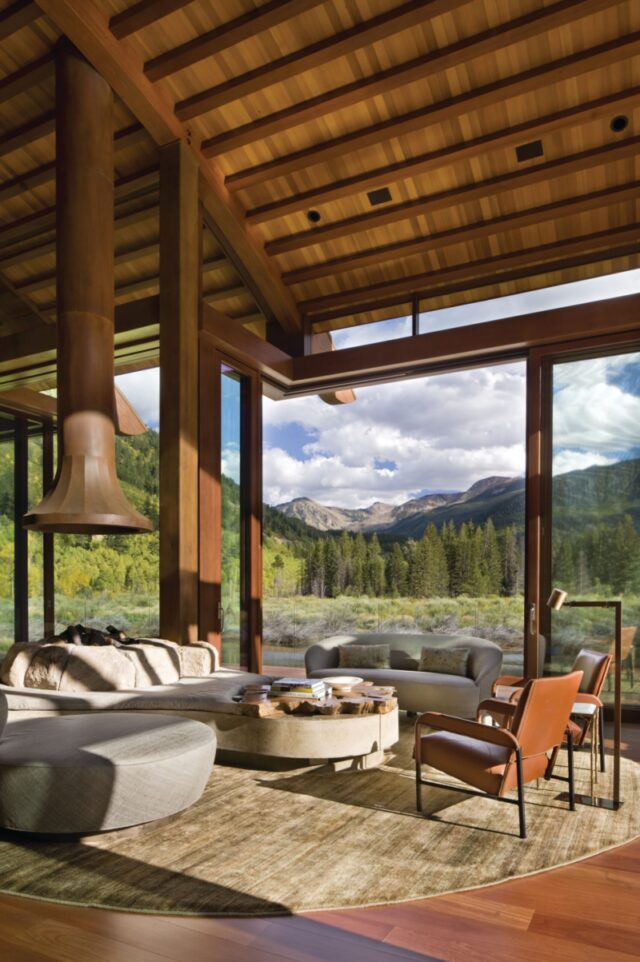
By Julia Szabo
Architect Lea Sisson’s Aspen Pass House is the home equivalent of pure local honey: holistic, nutrient-dense, with luxuriantly sublime taste. Here is an energy-efficient structure so organic that it looks and feels designed by Mother Nature herself. “Its orientation, adjacent to a pond and with stunning views of forest and mountain peaks beyond, emphasizes the property’s environmental unity,” Sisson says. Every window frames a breathtaking vista, enhanced by the architect’s own lifelong, intimate respect for Colorado’s rugged beauty.
Growing up in the Centennial State, camping with her family three or four days out of every week during the summers, “fishing, rafting, hiking, exploring, picking strawberries, you name it…the forest and mountains became my home. We never camped in an ‘official’ campground, so we ended up in the most remote and most beautiful places.” How did those experiences affect her perception of space? “The outdoors was as much my house as our ‘real’ house,” Sisson explains.
The residents of Aspen Pass House find themselves at home in nature, the outside-in space dynamics masterfully engineered to create an interior domain that feels warmly intimate, even in the midst of a wintry storm. It’s a vibe comparable to the sensations one experiences in a Frank Lloyd Wright landmark: completely, comfortably in tune with the elements, while simultaneously exalted by their majesty. (Wright christened his buildings with iconic names, e.g. Fallingwater, and Sisson’s projects likewise deserve their topographic handles: Pass House, Ridge House, Mesa House.)
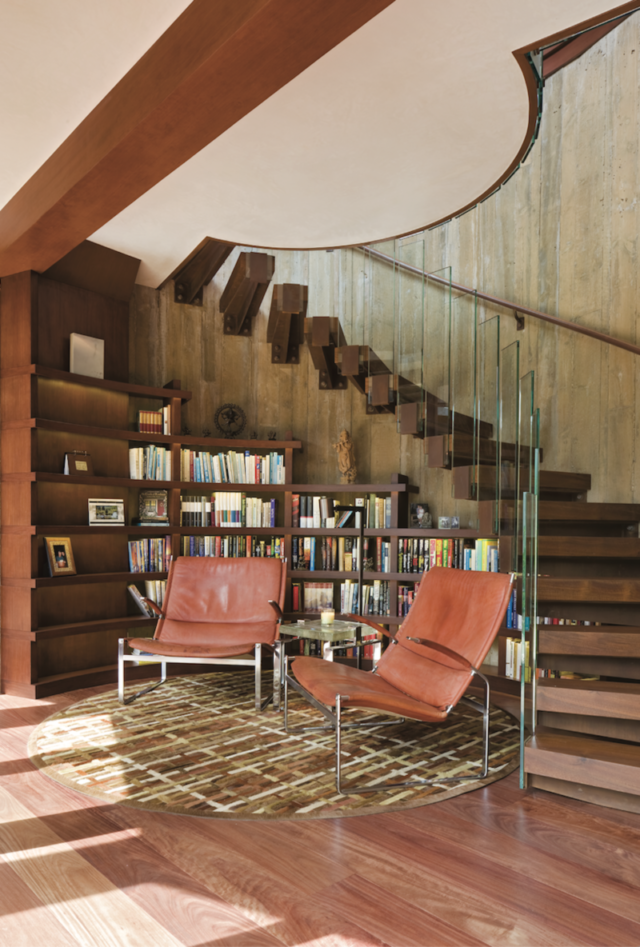
An exquisite example of biophilic design—literally, “nature-loving”—Pass House’s cool curves convey a stately drama tailored for “people seeking an experience, as opposed to a house,” Sisson says. “The main element to all my work is making sure people feel like they’re experiencing that same aha! moment when they walked on the land and there was nothing there yet. When they walk into the building, I want them to have that same huge view, that feeling of the sun and wind…all the sounds.” The house captures the power and poetry of navigating a mountain pass—a thrilling spiritual adventure.
“One of the main reasons people come to the mountains is not because they’re looking for Cartier—although that’s wonderful to have here—but because they’re seeking to experience nature,” she adds. “So my approach is to make sure they have every aspect of that: flooding spaces with sunlight, so there’s no need to turn on a light bulb until it’s dark out; making sure there are no angles to restrict you from flowing through…feeling as if you’re outside with only a roof above you, yet staying warm and cozy inside.”
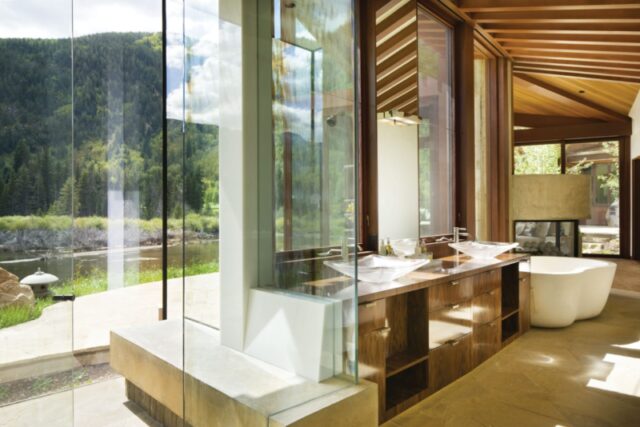
Pass House is a textbook example of the vital link between neuroscience and the built environment, explored biennially at the Salk Institute’s architecture conference, where Sisson is a faithful attendee: “If you can connect building to nature, it’s going to help your clients, because they will feel more relaxed,” she says. “It’s actually scientifically proven to heal.”
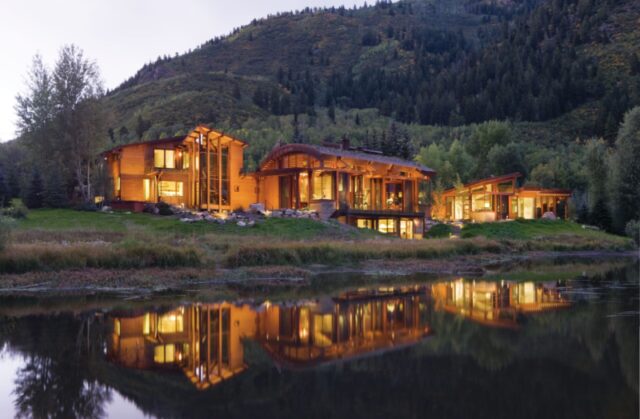
Biophilic design benefits the wellness of the collective as well as the individual, Sisson explains; taking shelter in nature makes us want to preserve it, for ourselves and future generations. In urban areas, ill-conceived expanses of glass have fatally disoriented shocking numbers of migratory birds. Pass House, on the other hand, is thoughtfully layered so “the glazing areas are very close to the trees,” she says, “which act as a buffer.”
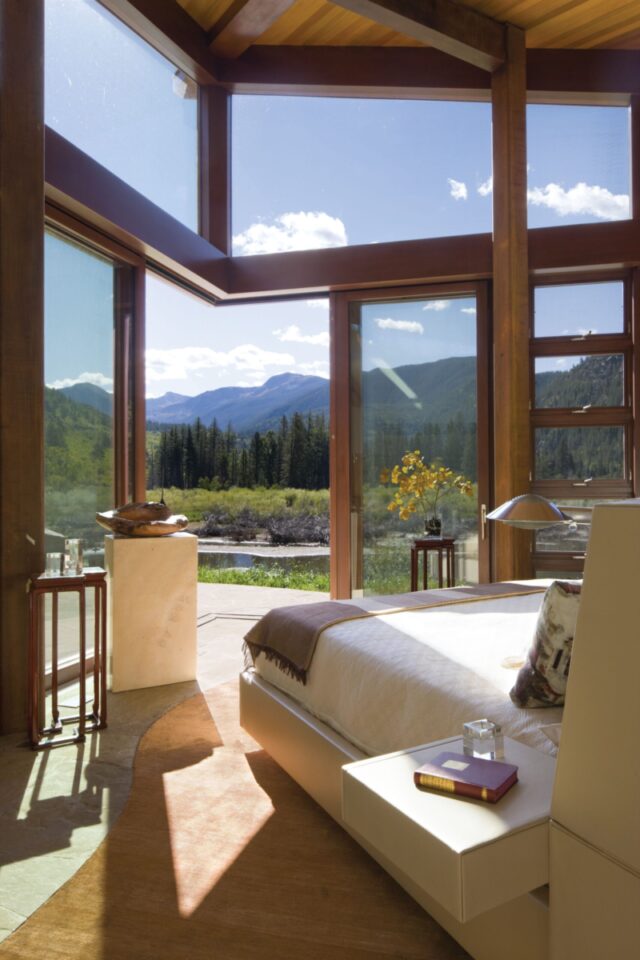
“When you’re connected to nature while inside your space, you’re going to have more affinity for it—a fuller sense of what nature is, how it needs to be protected and what can be done to safeguard it,” Sisson concludes. “And that activist approach is something precious you can take away with you, especially when you’re heading back to the city.” leasissonarchitects.com



